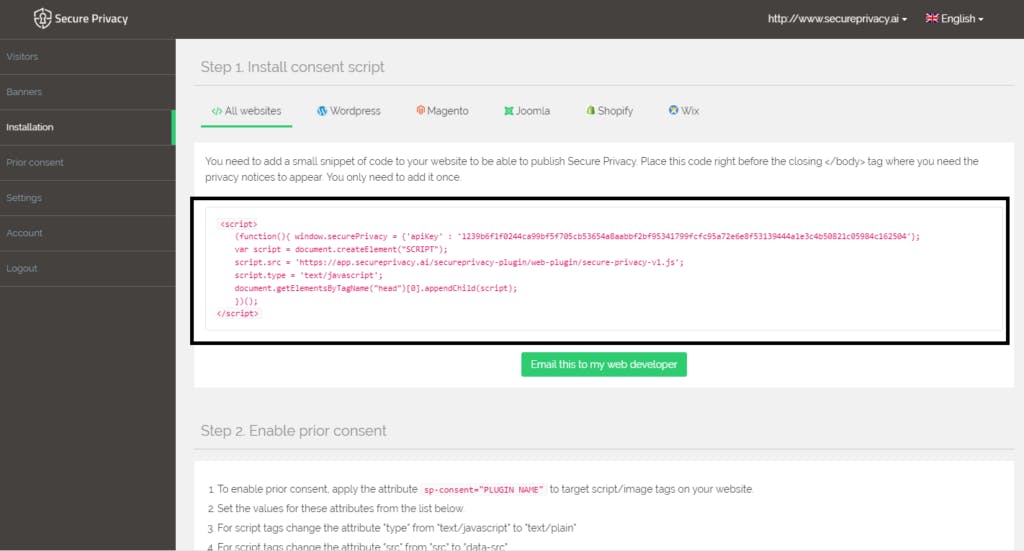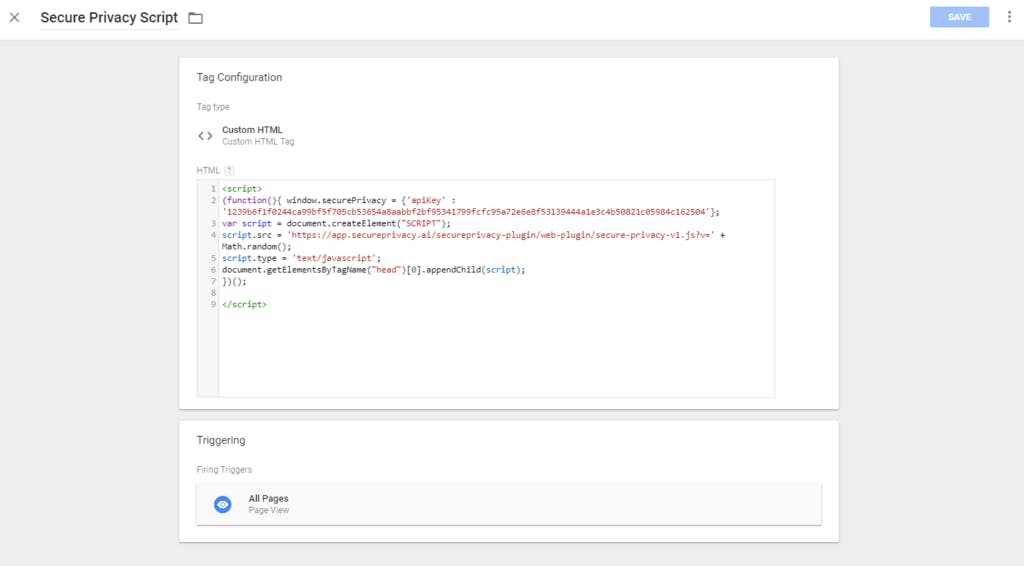How to install Secure Privacy with Google Tag Manager (GTM)
Websites using Google Tag Manager (GTM) can easily deploy Secure Privacy by following these step-by-step instructions.
Websites using Google Tag Manager (GTM) can easily deploy Secure Privacy by following these step-by-step instructions.
We assume that you have already created a GTM account, created a website container in GTM and added the GTM container snippet to your website as required: https://support.google.com/tagmanager/answer/6103696
Implementing Secure Privacy in GTM
1. In your GTM container create a new tag by clicking Tags > New > Custom HTML Tag.
2. In the “HTML” field, insert the script tag from your installation page.

3. Choose “All pages” as a trigger and apply a name to your tag at the top of the configuration page, e.g. “Secure Privacy Script”. Click “Save” to create the tag. This is what your tag configuration should look like (except for the value of the API key):

4. Finally, click “Publish” to push your changes live to your site.
The consent banner is now active on your website.
Other Tutorials
- JavaScript block third party cookies
- Install Secure Privacy with Adobe Dynamic Tag Manager
- How to install Secure Privacy on Joomla
- Google’s Consent Mode API and Secure Privacy
- How to install Secure Privacy on Wix
- How to install Secure Privacy on SquareSpace
- How to install Secure Privacy on Shopify
- How to integrate Secure Privacy with Hubspot

What is Cookie Consent? A Quick 2026-Ready Glance
Your website loads. Cookies track users. But without proper cookie consent, you're violating GDPR — risking fines up to €20 million or 4% of global revenue. Cookie consent is the legally required mechanism by which websites obtain explicit user approval before deploying non-essential tracking technologies. This requirement stems from GDPR Article 4(11) and the ePrivacy Directive, mandating that consent must be freely given, specific, informed, and unambiguous.
- Legal & News

DSAR Tools Explained: Best Software for Automating Privacy Requests
You're drowning in data subject access requests. Manual searches through dozens of systems miss regulatory deadlines and expose organizations to fines starting at $2,500 per violation. The solution? DSAR tools — purpose-built software that automates the entire process of responding to data subject access requests, from intake to delivery.
- Legal & News

IAB TCF 2.3 Explained: Requirements, Updates, and Implementation Guide (2026)
Your ad revenue dropped 40% overnight. Google stopped bidding on your inventory. Your DSP partners flagged your traffic as non-compliant. The culprit? An outdated TCF 2.2 consent string after the February 2026 enforcement deadline.
- Legal & News
- Cookie Consent
